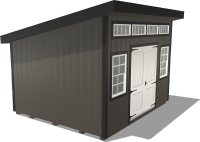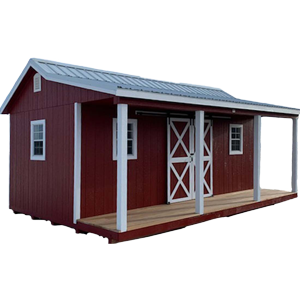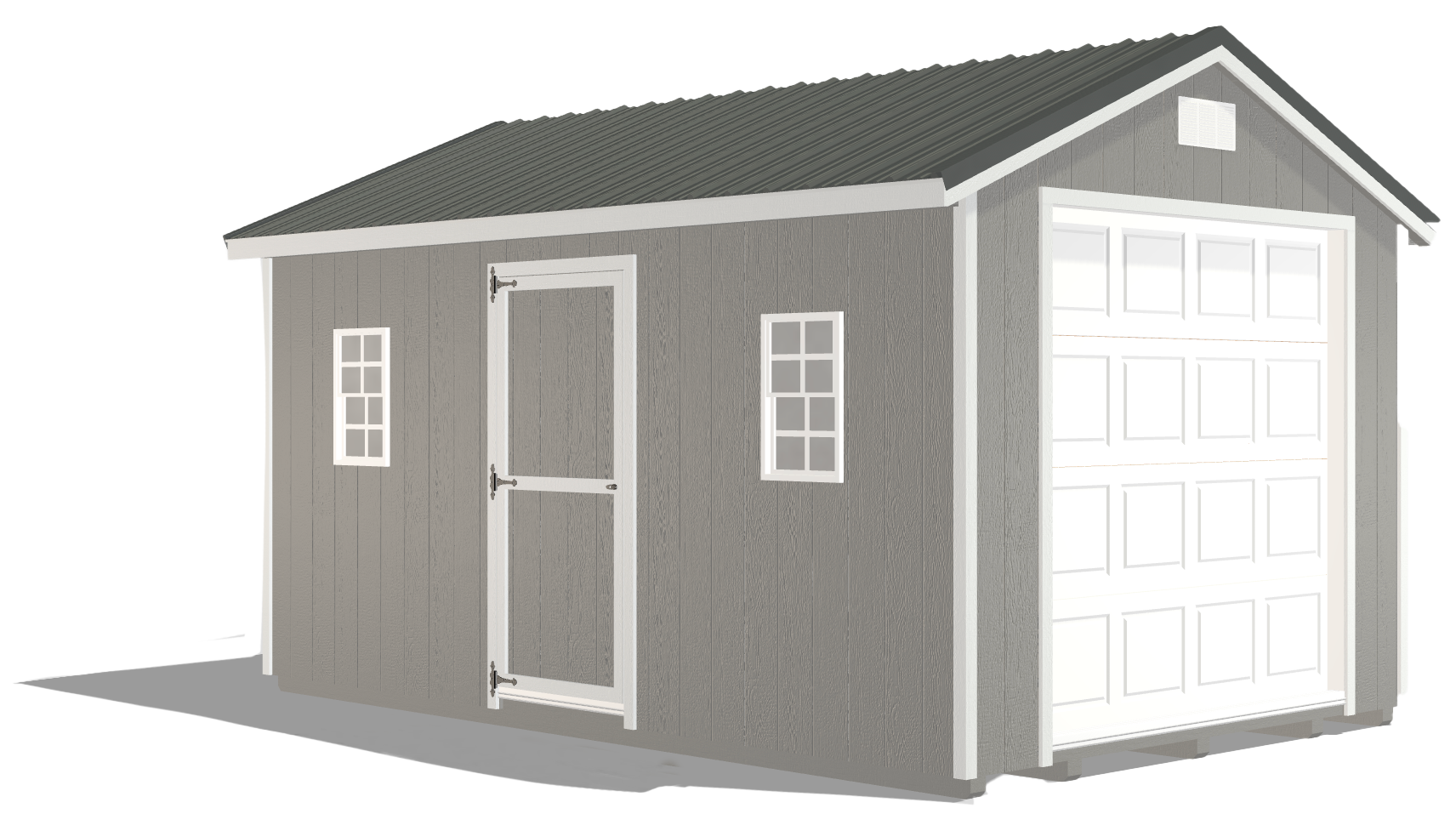How to Get the Best Results With Your Plants in Your Greenhouse
by Dakota Storage Buildings, on February 03, 2025

Whether you are a seasoned gardener or a beginner, the benefits of greenhouse gardening are undeniable: extended growing seasons, a controlled environment, and the ability to cultivate plants that might not thrive in your outdoor conditions. However, achieving the best results requires more than simply planting seeds. For growing vegetables in a greenhouse, you must pay careful attention to climate control, plant selection, soil quality, and watering practices.
In this guide, we will explore actionable tips to help you optimize your greenhouse environment. By addressing common challenges like inconsistent temperature, improper humidity, poor soil, and water issues, you can create a thriving ecosystem that produces robust, healthy plants. Let’s dive into how you can get the most out of your greenhouse gardening efforts.
Create the Perfect Climate for Greenhouse Gardening
The foundation of any successful greenhouse garden is maintaining the right climate. Temperature, humidity, and air circulation are critical for plant health and productivity. Without proper management, plants can become stressed, leading to poor growth or disease.
Maintaining Ideal Temperatures
Maintaining an ideal temperature range is essential for promoting healthy plant development. Most greenhouse plants thrive in temperatures between 65°F and 85°F during the day and slightly cooler at night. To achieve this:
- Use a thermometer to monitor the temperature regularly.
- Install fans, heaters, or cooling systems to adjust temperatures as needed.
- Consider using shade cloths to prevent overheating during hot seasons and insulation to retain warmth during colder months.
Balancing Humidity Levels
Humidity levels significantly impact plant growth. Too much moisture can lead to mold and mildew, while too little can cause plants to dry out. Aim to maintain humidity levels between 50% and 80%, depending on your plants' needs. Tools like hygrometers can help you track humidity, and you can manage levels by:
- Misting plants to increase humidity.
- Using a dehumidifier or ventilation system to reduce excess moisture.
- Grouping plants together to create microenvironments that retain humidity naturally.
Optimizing Ventilation
Proper ventilation is vital for preventing overheating and ensuring air circulation when growing vegetables in a greenhouse. Without it, plants can suffocate or become more susceptible to disease. Improve airflow by:
- Installing vents or windows that can be opened manually or automatically.
- Using circulating fans to distribute air evenly.
- Placing plants with adequate spacing to avoid overcrowding.
Maximize Your Greenhouse’s Potential With the Right Plants
Choosing the right plants is key to maximizing your greenhouse’s potential. Not all plants thrive in the same conditions, so it is important to match your greenhouse setup to plants’ specific needs.

Greenhouse-Friendly Plants
Focus on growing vegetables in a greenhouse that are well-suited for greenhouse conditions. Leafy greens, herbs, tomatoes, and peppers are excellent choices for beginners, as they thrive in controlled environments. For advanced gardeners, consider exotic plants like orchids or citrus trees that benefit from a stable greenhouse climate.
Match Your Crops to the Right Seasons
Greenhouses extend growing seasons, but certain plants still perform better during specific times of the year. Understanding which season a plant naturally thrives in ensures you can replicate the optimal conditions for growth, even within the controlled environment of a greenhouse. For example:
- Cool-season crops like lettuce, spinach, and broccoli thrive in spring and fall.
- Warm-season plants like cucumbers, melons, and peppers grow best in summer.
Rotating crops according to seasons ensures consistent yields year-round. This practice maximizes the use of your greenhouse space and helps maintain soil health by preventing nutrient depletion and reducing the risk of pests and diseases that can build up when the same crops are grown repeatedly in one area. By planning seasonal rotations, you can create a balanced growing cycle that keeps your greenhouse productive and sustainable over time.
Diversity Your Crops for Healthier Plants
Diversifying your plant selection maximizes greenhouse productivity and prevents nutrient depletion in the soil by encouraging a balanced use of available resources. Combining fast-growing crops with slower-growing ones ensures that your greenhouse space is utilized efficiently throughout the growing cycle. This variety also lets you stagger harvest times, providing a continuous supply of fresh produce. Additionally, experimenting with companion planting — such as pairing plants that naturally deter pests or enhance each other’s growth — can foster a healthier, more sustainable growing environment. A diverse selection of plants boosts yields and contributes to the overall resilience of your greenhouse ecosystem.
Build a Strong Foundation for Greenhouse Success
Healthy plants start with healthy soil. When growing vegetables in a greenhouse, soil management becomes even more critical because it directly influences plant growth and productivity. The controlled environment of a greenhouse means that soil quality must be actively maintained since external natural processes like rain or wind will not contribute to its renewal.
Ensure Your Soil is Ready for Planting
High-quality soil with proper drainage and aeration is essential. Use soil that is loose, rich in organic matter, and free from pests or diseases. Adding compost can improve texture and nutrient retention. Regularly refreshing the topsoil layer can also help replenish nutrients and maintain an ideal growing medium for your plants.
Keep Your Soil Nutrient-Rich
Greenhouse plants rely on a consistent supply of nutrients. Ensure your soil contains key elements like nitrogen, phosphorus, and potassium. Supplement with organic fertilizers or compost, and consider using a soil testing kit to identify and address deficiencies. Rotating crops or adding green manure between growing cycles can also help maintain nutrient balance and prevent soil exhaustion.
Keep pH Levels in Check
The pH of your soil affects nutrient availability to plants. Most plants prefer a slightly acidic to neutral pH range (6.0–7.0). Test your soil regularly and adjust with lime or sulfur as needed to maintain the right balance. Using pH-balanced water for irrigation can also help stabilize the soil environment and ensure consistent plant health.
Strategies To Ensure Plants Are Hydrated Without Overwatering
Water is a critical resource for greenhouse gardening, but improper watering can harm your plants. Striking the right balance is essential. Consistent watering practices tailored to the specific needs of your plants will ensure optimal growth and prevent unnecessary water waste.

Avoid Overwatering and Underwatering
Overwatering can lead to root rot, while underwatering causes stress and stunted growth. Regular but moderate watering ensures that plants receive enough moisture without becoming waterlogged. Always check the soil before watering to avoid overdoing it. Observing plant leaves and stems for signs of dehydration or overhydration can also help you fine-tune your watering routine.
Smart Watering Techniques
Using efficient watering methods helps maintain consistent moisture levels. Consider:
- Drip irrigation systems for precise water delivery.
- Self-watering containers to reduce manual effort.
- Watering early in the day to prevent fungal diseases caused by overnight dampness.
Grouping plants with similar water needs together can streamline your watering efforts and prevent over- or under-watering individual species.
Monitor Soil Moisture
Soil moisture levels vary depending on plant type and environmental conditions. Tools like moisture meters can help you track soil hydration accurately, ensuring plants get the water they need without waste. Regularly testing the moisture levels at different depths can help identify any uneven water distribution in your greenhouse.
Create the Perfect Environment for Year-Round Plant Growth
Greenhouse gardening is a rewarding experience, offering the ability to grow plants year-round and control their environment. However, achieving the best results requires attention to key factors like climate control, plant selection, soil health, and watering practices. By applying the tips in this guide, you can overcome common challenges and create a thriving greenhouse garden that yields robust, healthy plants.
Ready to start growing vegetables in a greenhouse? Explore our stock greenhouses designed to help you create the perfect growing environment for your plants. Start your journey to a more productive and enjoyable greenhouse garden today!

























